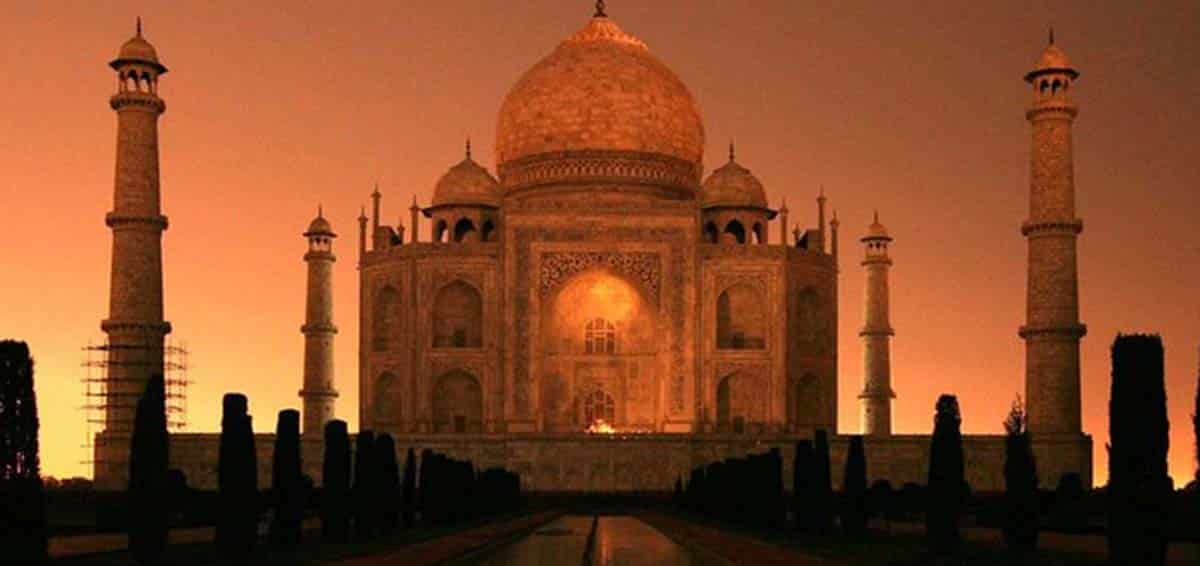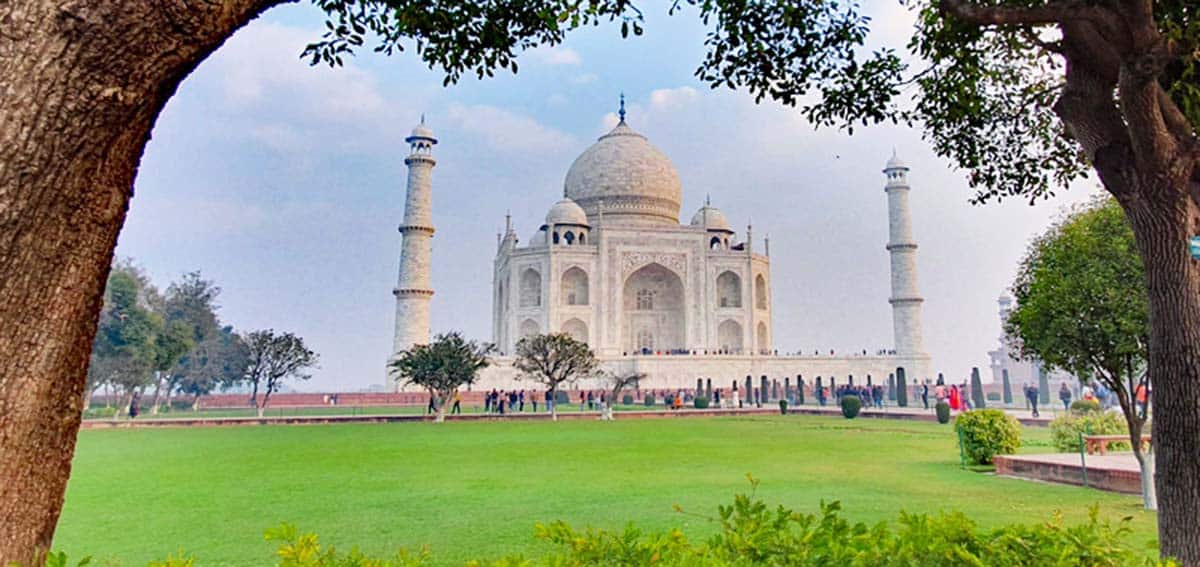
One of the most famous buildings in the world is the Taj Mahal. It is in India and tourists who visit this wonderful country do not leave without visiting it. Sure, if you don't know his name, you've seen him a thousand times on TV, in magazines, or on the Internet.
But what is the Taj Mahal actually? Is it a palace, a monument, a tomb, a government building…?
TheTaj Mahal

Actually the Taj Mahal it's a mausoleum, a huge and majestic tomb that was built in the XNUMXth century for him to rest one of the wives of Emperor Sha Jahan. The building is on the banks of the Yamuna river, in the city of Angra.
The complex has a 17 hectares within which there is a mosque, a guest house, gardens, a medieval wall and the tomb itself. Construction began in 1632 and by 1643 it was practically finished, although the works continued for another decade. If we do some quick math, the cost of construction today must be around one billion dollars.

how much history Emperor Shah Jahan wanted to honor the memory of his beloved wife Mumtaz Mahal, who had died in childbirth of his fourteenth son. It was the year 1631 and the works began the following year, in the midst of the sovereign's pain. This king was the third son of Emperor Jahangir and Princess Manmati and proclaimed himself emperor in 1628. He had a desire for power and was very active politically, adding territories, but he was also passionate about architecture.
When he named Angra as the capital of his empire, he decided to build two great mosques, in addition to the Taj Mahal, although the latter is the height of his desires. The Taj Mahal is truly superb and as we know, he built it to honor the memory of the most beloved of his three queens, Mumtaz Mahal.

But how is the taj mahal? It seems that the architects were inspired by previous constructions, such as the tomb of Timor, the creator of the Mughal dynasty, and other royal tombs. But these tombs were made of red limestone, while Sha Jahan chose to make his work with white marble and semi precious stones.
The tomb is at the very heart of the complex: it is a white marble structure that sits on a square plinth and has a huge dome, always following the classical Islamic design. There are many rooms and in one of them is the tomb, the cenotaph where today the wife rests but also the emperor who died just a decade after his beloved. The gardens have fountains, brick and marble paths, many flowerbeds, rose bushes, fruit trees...
The dome of the building, the most striking from near and far, is 35 meters high, which adds majesty. If we add to this that the entire complex is beautifully decorated, it is understood why the Taj Mahal continues to amaze its visitors. Have precious external decoration, with elements of calligraphy, abstract drawings and plant motifs also, all with different techniques, from sculptures, paintings, reliefs or embedded stones.

Everywhere there are passages from the Koran used decoratively. There are letters embedded in gold, jasper or black marble, some very detailed, others more fluid that can barely be read. There is even calligraphy drawn in proportion so that it can be read from below, from the height of the people. Abstract patterns are everywhere too, but also on the floors and on the paths, with colorful mosaics.
The precious stones appear inside the building, in the central room and where the cenotaphs of the sovereign and his wife are. The room is octagonal in shape and has many entrances. The internal walls are 25 meters high and above them stands a false dome decorated with solar motifs. At ground level there are eight arches and some have balconies. The windows also have a white marble screen.

The cenotaph of the emperor's wife is in the center of the room: on a rectangular marble base there is also a marble urn. There are precious gems everywhere. Next to it is the cenotaph of Sha Jahan, which is larger and was added after the emperor's death ten years later.
But the Taj Mahal is not only wonderful for the building itself, but also for the external design, for its gardens and the great hydraulic works that were necessary to irrigate them. There are clay pipes, copper pipes, canals, fountains, distribution tanks... Not everything is preserved, but what was left allows us to see how wonderful it was.
The passing of the centuries has certainly affected the monument, although it has come down to our time quite well. At the beginning of the XNUMXth century, many restoration works were carried out.. The British were still. More recently there has been damage to the marble façade caused by air pollution, as a result of toxic emissions from nearby factories and car engines.

As a result of this, a protection space was decided around the monument, prohibiting manufacturing activity and the circulation of vehicles. Later, in 1998, restoration work was done again.
Going back a bit to history, in 1657 Shah Jahan fell ill and then began a cruel battle between his four sons for his inheritance and the throne. The winner was Aurangzeb and in the end he put his father in the Red Fort until his death.
Taj Mahal practical information
- The Taj Mahal opens half an hour before sunset and closes half an hour before sunset. Tickets are sold at all gates entering the complex.
- The ticket price for foreigners is 1100 / 200 rupees. Those who buy the ticket online have a discount of 5 rupees.
- Children under 15 years of age are not allowed to enter.
- An extra 200 rupees is charged if you want to visit the mausoleum.
- There are night visits five days a month. For example, when there is a full and two nights before and two nights after. Tickets for this visit are available one day before the event, in Agra. The hours of the night visit are from 8:30 pm to 12:30 am, in eight groups of 50 people. The visit lasts half an hour. The ticket costs 750 rupees per foreign adult.
- Cell phones must be turned off or on silent. Smoking is prohibited and so is taking photos in the main mausoleum.
- You can get to Angra by plane or by train. From the city to the Taj Mahal you can take a taxi, a rickshaw or a radio taxi.